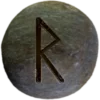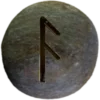Last Updated on June 7, 2025
Table of Contents


History and Mythology
Heathenry forms the backbone of Asatru, providing its framework, values, and spiritual outlook. It draws from the pre-Christian beliefs and practices of the Norse and Germanic peoples. The word “heathen,” derived from Old English hǣþen (meaning “of the heath”), reflects the connection between ancient spirituality and the natural world. In Asatru, heathenry focuses on honoring the gods, ancestors, and spirits of the land through rituals, community, and personal commitment.
Central to Asatru’s heathenry is the reverence for the Æsir and Vanir gods. The Æsir include figures like Odin, Thor, and Frigg, representing wisdom, strength, and family. The Vanir gods, such as Freyr and Freyja, connect to fertility, prosperity, and the cycles of nature. Asatruar (followers of Asatru) honor these deities through seasonal blóts (sacrificial rituals) and sumbels (toasting ceremonies). These rituals strengthen bonds between humans, the gods, and the natural world.
Ancestor veneration is another core element of heathenry in Asatru. Ancestral spirits, or disir (pronounced DEE-seer), are thought to guide and protect their descendants. Asatruar offer food, drink, or other gifts to their ancestors, often during ceremonies or private moments of reflection. By honoring the past, practitioners maintain a connection to their lineage and express gratitude for the sacrifices of those who came before.
The spirits of the land, or vættir (pronounced VYET-teer), are deeply respected in Asatru. These spirits inhabit forests, rivers, mountains, and homes. Asatruar often leave offerings to the vættir, such as mead or bread, to ensure harmony and goodwill. Many also see the natural world as sacred, aligning with modern values of sustainability and environmental stewardship.
Community and Personal Responsibility
Community is vital in Asatru’s expression of heathenry. Kindreds, small groups of like-minded practitioners, often gather to celebrate holidays like Yule and Midsummer. These gatherings include storytelling, feasting, and rituals that deepen bonds between members. Such events reinforce a sense of belonging and shared purpose, helping Asatruar carry forward their traditions in the modern world.
Asatru’s heathenry also emphasizes personal responsibility and honor. Practitioners follow the Nine Noble Virtues—courage, truth, honor, fidelity, discipline, hospitality, self-reliance, industriousness, and perseverance. These principles guide individuals in their daily lives, encouraging ethical behavior and integrity.
For Asatruar, heathenry is a living tradition, connecting the ancient wisdom of their ancestors to the realities of the present. It offers a path of spiritual growth, community engagement, and alignment with nature’s rhythms. Through rituals, values, and personal dedication, heathenry remains a vital aspect of Asatru practice.
Runes Associated with Heathenry
The Elder Futhark runes Tiwaz (ᛏ) and Raido (ᚱ) resonate with heathenry’s core values. Tiwaz (pronounced TEE-wahz) represents justice, sacrifice, and the warrior’s honor. It reflects the heathen commitment to integrity and courage. Raido (pronounced RYE-doe) symbolizes journeys, both physical and spiritual. This rune reminds heathens to embrace life’s challenges and to seek growth through exploration and adventure. ![]()
Its Importance to Asatruar
Heathenry provides Asatruar with a spiritual foundation tied to their ancestral traditions. It fosters a sense of connection to ancient values and practices. Heathenry encourages living with honor, building community, and maintaining strong ties with the divine and natural worlds. It offers a way to celebrate life’s cycles and forge meaningful relationships with others, past and present.


